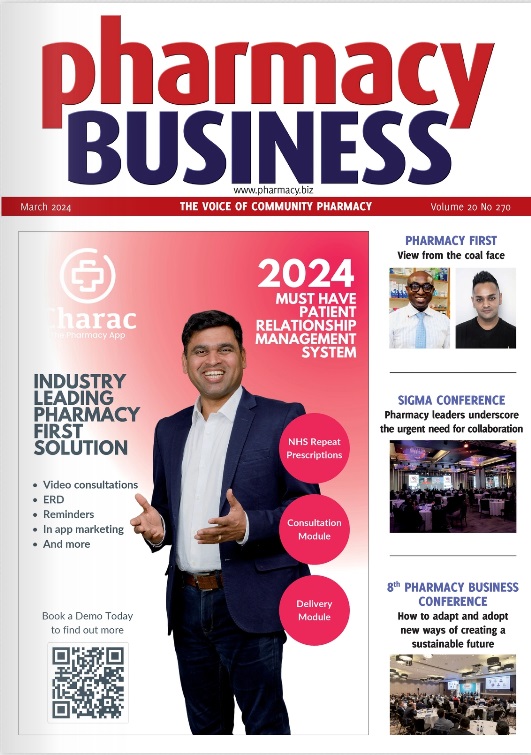With Amazon training its sights on pharmacy, Gary Paragpuri considers how the sector can brace itself for the impact…
When you’re the richest man in the world, what you say carries significance.
But there are five words attributed to Jeff Bezos, the founder of Amazon, that are arguably more significant than all the rest: “your margin is my opportunity”.
It’s a brilliantly succinct summary of the company’s scale-based model, and it hints at the aggressively expansive philosophy that has transformed Amazon from an online bookstore set up in Bezos’ own garage to a multi-billion-dollar corporate goliath that is expected to hoover up 50 per cent of the gross merchandise volume (GMV) of the entire US e-commerce retail market in 2021.
The question is, whose margin is Jeff coming for next?
Research firm CB Insights recently looked to provide an answer in a report that explored five industries where Amazon’s disruptive intentions are clearest. It placed pharmacy in the number one spot.
Proceeding by stealth
Amazon’s intentions in the space are nothing new, the report notes, given the 40 per cent stake it took in the nascent Drugstore.com business back in 1999. Things moved up a notch, however, in 2018 when Amazon acquired online pharmacy firm PillPack in a deal worth around $750m, promptly wiping an estimated $11bn from the market capitalisation value of competitors such as CVS Health, Walgreens Boots Alliance and Rite Aid in the process.
PillPack has since been absorbed into Amazon Pharmacy, which officially launched in November 2020 in the US, offering customers the chance to receive unlimited, free, two day deliveries via their ‘Prime’ membership.
While pharmacy in the UK represents a very different proposition, there are inevitably signs that Amazon may be beating its disruptive path to our shores before too long, having already been granted trademark status for Amazon Pharmacy in the UK in December 2020.
For many UK contractors, however, Bezos is still not considered a serious threat. When scanning the horizon for evidence of competition, their lists are typically dominated by more visible or longstanding candidates, such as the independent down the road, the multiple a few streets away, or the late-night supermarket pharmacy on the edge of town.
And while that may be the case, it is critical to the future profitability of any pharmacy business that the true competitive picture is evaluated using hard data. Local knowledge and gut feel are valuable tools, but in a fast-moving world, there is a need to expand your armoury with good information to build up a more three-dimensional, contextualized view of your market and your position within it.
Monitoring fluctuations in the data then enables you to understand more about your own performance and where your risks and opportunities lie.
Measuring up against the competition
For example, any change in overall prescription volumes from surgeries within the local area over a given period should, theoretically speaking, correlate to a similar change in your own prescription volumes. A two per cent increase might be considered stable growth but in the context of a wider market that has risen by five per cent, there is an indication that share is being lost.
And if your principal competitors are also registering similar growth rates, then are you confident you know where that ‘lost’ share is really going?
The uncomfortable truth is that the digital competition is a strong temptation for today’s consumers. This particularly applies in the retail space, where the UK Customer Brand Loyalty Survey by Criteo revealed that 64 per cent of UK shoppers are actively looking to try new brands. Their promiscuity is driven by two main factors: the pursuit of value for money and better customer service.
Losing customers, by definition, is costly. As well as the direct impact of lost business, it triggers a need to invest in customer acquisition, and the accepted thinking is that the cost to acquire a new customer is anywhere from five to 25 times more expensive than retaining an existing one.
Far better- and less expensive-to invest in your existing customers to keep them happy and dissuade them from seeking out the competition. According to Bain & Company and Harvard Business School, increasing customer retention rates by five per cent can increase profits by 25 per cent to 95 per cent.
Separate research indicates that existing customers not only spend more on average compared with new customers, but are also more likely to try new products.
Building loyalty through convenience
Transposing these findings into pharmacy underlines the importance of investing in patients to retain their custom. Addressing their key priorities around customer service by providing the enhanced convenience of a Pharmaself24 24/7 prescription collection unit, for example, builds loyalty and sets relationships on a firmer footing. This increases the chances of withstanding whatever disruption arrives.
Today, this disruption is already present in the form of rapidly growing internet pharmacies and innovations such as central-fill hub-and-spoke models. In the case of Amazon, it is likely to arrive with enough fanfare that it will be difficult for people to ignore. When it does, you can’t stop your margin being an opportunity, but you can make sure your pharmacy is in the best possible position to protect itself.
Gary Paragpuri is CEO at Hub and Spoke Innovations.









